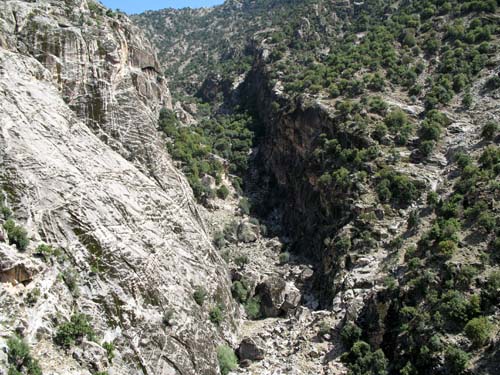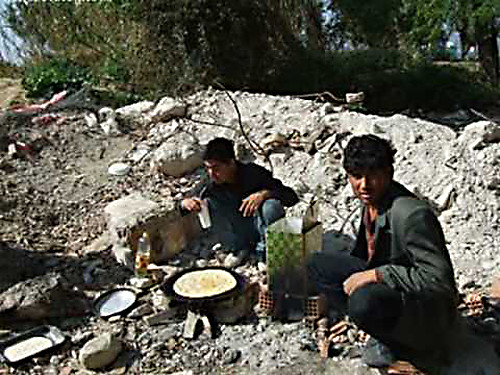
Last year a friend of mine in Germany sent me his Meisterarbeit about Kant’s Transcendental Aesthetic, and as you might expect (if you have any expectations about such a thing), it was a forest of Begriffe.
So many concepts, and such a difficult subject, now further complicated by 200 years of criticism and analysis! But it wasn’t exactly inconceivable that I might provide some aid and comfort for my friend, because I studied the first Critique once upon a time with a famous Kantian, although he never had a balkier student!
But as I began to read through my friend’s thesis, with a German text of the Kritik der reinen Vernunft and two translations (Max Muller and Kemp Smith) near at hand, an uncanny sort of unfamiliarity with what was formerly most familiar about “the Chinese of Königsberg ” suddenly descended upon me.
Did I really have a concept of a “concept?”
Leaving aside the difficult examples which have provided grist for the mills of nominalism and realism for more than 2000 years, and proceeding directly to Kant’s favorite objects of intuition and analysis in geometry, where every quality of a circle can be deduced from the definition, I still doubted that all those qualities were already somehow present in my intuition as soon as I conceived of a curve everywhere equidistant from a given point.
Did I already (or ever) also conceive of the beautiful connection between Pascal’s triangle and the four (or any number of) travelers problem, where all of them traveling at constant speeds on skew lines will inevitably meet all of each other if any two of them meet all the rest? It was hard enough to conceive a statement of the problem!
Worse yet, was it even conceivable for anyone to conceive of the higher-dimensional analogues of our familiar two-dimensional circles, the most familiar of all geometrical objects, but eventually generalized into a realm where anything like a geometric interpretation of those hyper-complicated generalizations may (or may not) be impossible? (This is a worm’s-eye view of the Hodge Conjecture, and for an eagle’s-eye view readers are referred to Pierre Deligne.)
Apart from this zone of ne plus ultra abstraction, everything concrete also conceals an equal inconceivability in its limitless particularity, every apple indescribably individuated away from a concept of apples which is serviceable enough for grocery stores and picture dictionaries, but only because almost none of the differences matter.
If you know it’s a Fuji apple, and it isn’t a rotten apple, or an apple with a worm in it, you know almost everything that you need or want to know about that apple.
So our concepts of concrete things are so dependable in our everyday existence that it’s only natural to invest them with a confidence beyond their everyday context, in a parallel world of Platonic Forms, for example, and not only beyond any possible experience, where Kantian antinomies return us abruptly to the here and now, but even more naturally into domains where we might have any amount of experience, but happen to have none at all.
And then, descending from the aerial perspective of Pierre Deligne and Plato and Kant, down, down, and down to the less-than-a-worm’s eye view of George W. Bush…
I wondered what that dim and demented little man had conceived we were invading when our armies invaded Afghanistan.
Was it only a shape on a map, where Bush or his tools at the CIA wrote “Here There Be Terrorists!” like a scrawl on some medieval Imaginarium: “Here There Be Dragons?”
And dragons exist! …although those nasty animals on an island in Indonesia only minimally resemble the dragons so beautifully imagined by Raphael and many other painters.
And terrorists likewise exist! …although they only distantly intersect with our everyday experience, and by the time we recognized the name “Mohammed Atta,” it was the name of nothing.
But at one time Mohamed Atta was a brilliant engineer and architect with an advanced degree in urban planning from the Technical University of Hamburg-Harburg. Immediately before he disappeared into the Islamist underground he was spectacularly under-employed as unskilled labor in a warehouse.
And he hated tall buildings.

Mohamed Atta’s otherwise austere apartment in Hamburg, Germany, had a curious decoration. On his wall hung a poster of the black-and-white photograph taken by Lewis Hine in 1930 of construction workers perched on a beam of the Empire State Building high above New York. The city far below looks dwarfed and inconsequential. According to his teachers and former classmates, Atta believed that high-rise buildings had desecrated his homeland. In the ancient cities of the Middle East, the time-honored mode of construction was to build one- and two-story houses with private courtyards. The construction of towering, impersonal and usually ugly apartment blocks in the 1960s and ’70s, Atta believed, had ruined the old neighborhoods, robbing their inhabitants of privacy and dignity.
The ordinary business of terrorism is so crude that even American media can almost adequately describe it. Dig a hole. Put a bomb in it. Boom!
Mohamed Atta elevated this miserable occupation into an art-form of almost super-human power. Superman “leaps tall buildings in a single bound.” Mohamed Atta knocks them down, with nothing but a set of warehouse box-cutters and a few clumsy accomplices, like Zacarias Moussaoui.
To match this masterpiece of the art of destruction, you would have to cast someone like Richard Feynman in the dual role of inventing nuclear weapons and also piloting the plane which obliterated Hiroshima, and if your concept of terrorism includes the whole course of terror running backward and forward between 9/11 and Hiroshima, like Feynman’s hypothetical electron/positrons flowing backward and forward in time, in an infinite dance of creation and annihilation, from Big Bang to Big Bang…
Then it’s probably a concept of everything, and nothing.





